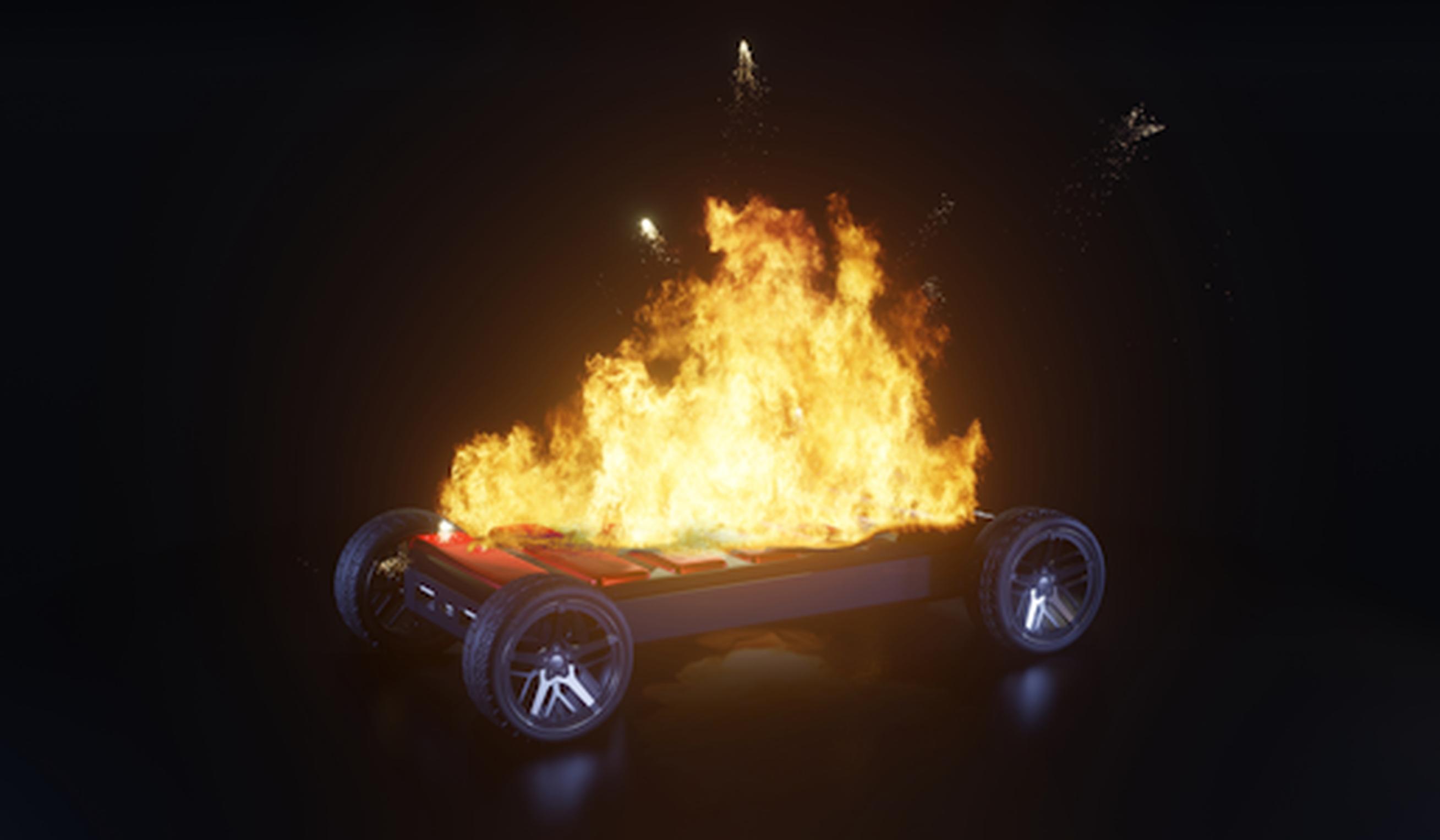

When it comes to transport, safety is of the utmost importance, and due to the exponentially increasing demand in the electric vehicle market, the awareness of thermal runaway and potential fires from batteries is increasing simultaneously.
IDTechEx's report Fire Protection Materials for EV Batteries 2024-2034: Markets, Trends, and Forecasts explores different battery technologies and fire-resistant materials as emerging options for dealing with the risks.
Recalls of electric vehicles, although rare, have happened over the past few years due to risks relating to thermal runaway. As might be expected, some of these fires have occurred during crashes or fast charging, but somewhat unexpectedly, it has often been while the vehicle is stationary and not undergoing any obvious operations. This highlights the unpredictability of these incidents.
Cell-to-pack batteries are proving popular because of the possibilities of improving energy density, reducing part counts, and decreasing costs. However, stacking all of the cells directly together leads to a greater risk in propagation of thermal runaway. At the cell-level, with the transition to cell-to-pack, the need to incorporate materials that can achieve multiple functions is vital.
The ideal candidate would be materials that can provide thermal and electrical isolation, conformability, and even structure while being lightweight, thin, and low-cost. In his recent IDTechEx webinar, The Evolving Opportunity in EV Battery Fire Protection Materials, research director Dr James Edmondson discussed options such as encapsulating foams to get between cells, or compression pads with fire protection to protect pouch-type cells. These materials can aid in preventing the propagation of thermal runaway from cell to cell within the pack.
Various materials can also be applied under the lid, on top of modules, or on the outside of the battery pack to provide further protection beyond the cell-level. Examples include ceramic blankets or mica sheets below the lid and various types of fire-protective coatings on the enclosure.
Thermal management is another option for reducing fire hazards. Active liquid cooling and refrigerant have already replaced air-cooled batteries to allow for greater control of battery temperature. Cold plates within the pack are not commonplace, but could future battery chemistries impact how thermal management is achieved?
The switch to sodium-ion from lithium-ion could be another solution to reducing the risk of fires. Despite the fact that this type of battery still comes with a risk, early studies report a lower chance of thermal runaway. Their ability to be transported at 0V also makes them lower risk than lithium-ion when considering transport and assembly.
Solid-state batteries could also replace the liquid electrolyte in traditional lithium-ion cells with a better operating temperature range, meaning they are less likely to overheat. More information about their differences can be found in IDTechEx's report.
Battery demand is greatest in the automotive sector, with countries such as Norway having the highest market share of EVs in the world. However, other modes of transport are also at risk. Electric buses that do long hours and require larger batteries could be even more important to protect, as so many people are on board throughout the day. In Asia, electric scooters are a popular form of transport and are commonly brought inside the house, making fire protection essential.
Despite petrol and diesel cars being more likely to catch on fire, the fast-growing electric vehicle market still has some risks. IDTechEx has benchmarked the various fire protection material options in terms of efficiency in application, thermal and electrical insulation, costs, and more. The report also provides market shares for current materials and future adoption.
The popularity of this topic has meant that increasing numbers of companies are taking interest in the market. Whilst common materials used already will remain a mainstay, their market share is predicted to be eroded somewhat by new emerging alternatives like aerogels and compression pads.
The free IDTechEx webinar The Evolving Opportunity in EV Battery Fire Protection Materials is still available for viewing on-demand until 29 August 2024.
Visit www.IDTechEx.com/Webinars to register for this and other technology webinars.

TransportXtra is part of Landor LINKS
© 2025 TransportXtra | Landor LINKS Ltd | All Rights Reserved
Subscriptions, Magazines & Online Access Enquires
[Frequently Asked Questions]
Email: subs.ltt@landor.co.uk | Tel: +44 (0) 20 7091 7959
Shop & Accounts Enquires
Email: accounts@landor.co.uk | Tel: +44 (0) 20 7091 7855
Advertising Sales & Recruitment Enquires
Email: daniel@landor.co.uk | Tel: +44 (0) 20 7091 7861
Events & Conference Enquires
Email: conferences@landor.co.uk | Tel: +44 (0) 20 7091 7865
Press Releases & Editorial Enquires
Email: info@transportxtra.com | Tel: +44 (0) 20 7091 7875
Privacy Policy | Terms and Conditions | Advertise
Web design london by Brainiac Media 2020